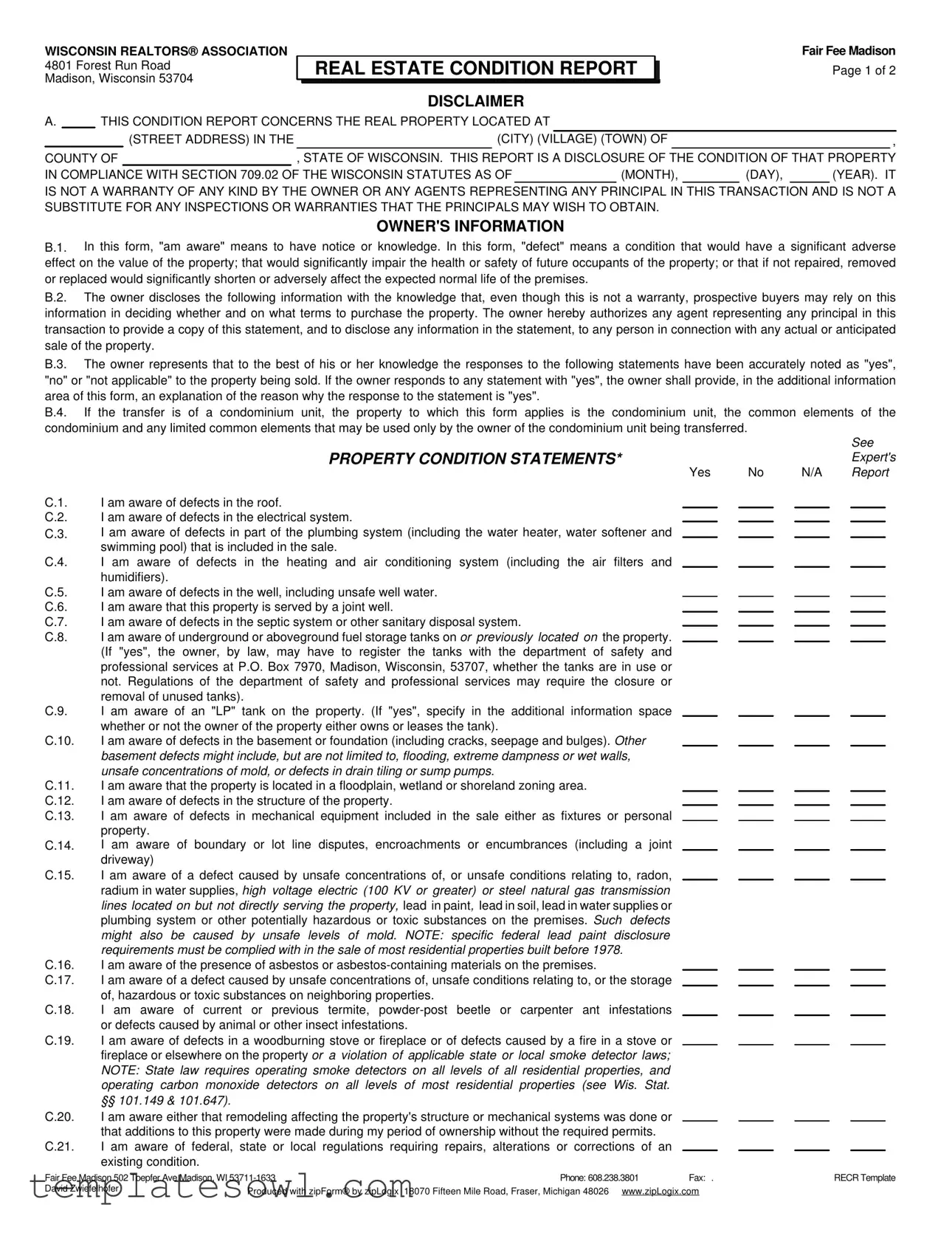What is the purpose of the Real Estate Condition Report form?
The Real Estate Condition Report form is designed to disclose the condition of a property as required by Wisconsin law. It provides prospective buyers with information on various aspects of the property that could affect its value or safety, allowing them to make informed decisions when considering a purchase. This report is not a warranty, but it helps clarify the property's condition as of the date it is completed.
Who is responsible for completing the report?
The property owner is responsible for completing the Real Estate Condition Report. They must answer questions regarding any known defects or issues with the property honestly and accurately. This duty extends to any representatives or agents involved in the transaction, who may also disclose the information to potential buyers.
What does "defect" mean in the context of this report?
In the report, a "defect" refers to a condition that can significantly reduce the property's value, affect the health or safety of its occupants, or potentially shorten the property’s expected lifespan if not addressed. This can cover a wide range of issues, from structural problems to environmental hazards.
Are there specific areas that the report addresses?
Yes, the report covers several specific areas, including the roof, electrical and plumbing systems, heating and cooling systems, septic systems, and the presence of hazardous materials like asbestos or lead. Each section requires the owner to indicate their awareness of any defects through "yes," "no," or "not applicable" responses.
What happens if the owner knows of a defect?
If the owner responds "yes" to any statement indicating a defect, they must provide additional information in the designated area of the form. This explanation helps potential buyers understand the nature and extent of the defect, as well as any relevant details regarding repairs or safety concerns.
Is this report a substitute for a property inspection?
No, the Real Estate Condition Report is not a substitute for a professional inspection. While it discloses known defects, prospective buyers should still obtain their own inspections to uncover any issues that may not be readily apparent or disclosed.
What are the potential consequences of not disclosing known defects?
Failing to disclose known defects can lead to legal consequences for the owner. Buyers may seek legal recourse if they discover undisclosed issues after the sale, potentially resulting in financial damages or the ability to rescind the sale. It is crucial for owners to accurately complete the report to protect themselves legally.
How is this form used in the real estate transaction process?
The Real Estate Condition Report is typically provided to prospective buyers once an offer is made on a property. It forms part of the documentation in the sale process, allowing buyers to review the property’s condition before finalizing the purchase agreement.
What if changes occur after the report is completed?
If the owner becomes aware of new information that would alter any responses in the report, Wisconsin law requires them to issue a new or amended report. This ensures that any significant changes affecting the property's condition are communicated to prospective buyers.
Can prospective buyers rely solely on this report?
While the Real Estate Condition Report provides valuable insights, it should not be the sole basis for buyers' decisions. It is advisable for buyers to perform their own due diligence, which may include professional inspections and further research on the property's history and condition.


